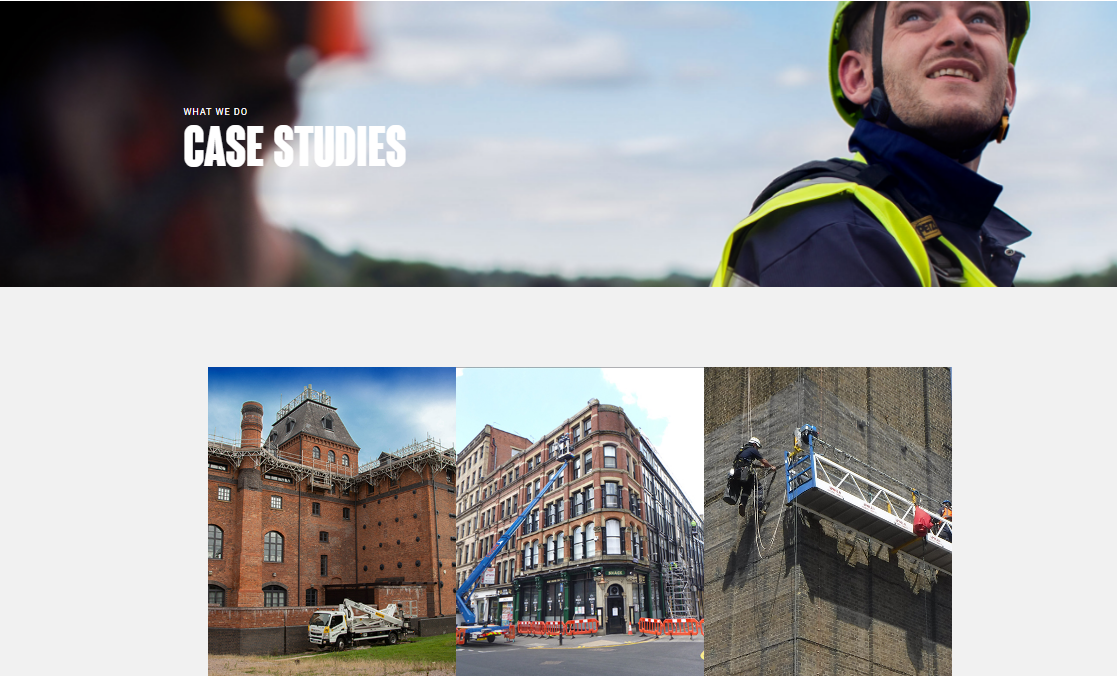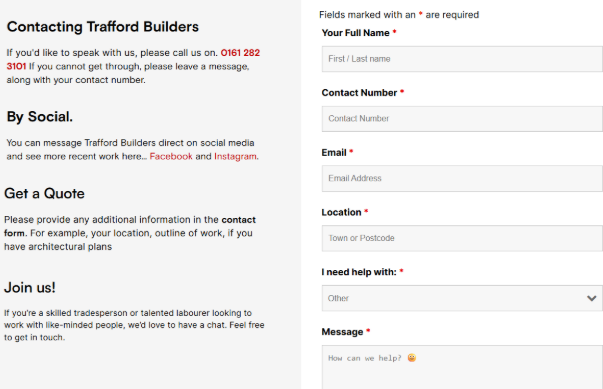5 Website Fixes for Builders That Can Double Your Enquiries
A website is often the first place a client sees your business. For home builders and construction companies, it is more than an online brochure. It can be one of the most effective tools for winning new enquiries. The problem is that many construction websites are not set up to convert visitors into leads. A confusing layout, missing contact information or a slow design can all push potential clients away. By making a few smart website fixes, you can turn your site into a tool that works for you and brings in more work.
1. Put a Call to Action at the Top
Visitors should know within seconds what you do and how they can reach you. A strong call to action on your homepage makes this clear. Examples include “Get your free quote today” or “Book a callback now.” Pair this with your phone number and email address, and place them where people can see them right away. On mobile, make sure users can click to call without searching around.
Every page should guide the reader to the next step. That could be asking for a quote, viewing a project gallery or filling in a form. The simpler you make this process, the more enquiries you will generate.
2. Create Service Pages That Rank
A common mistake in website development is putting all services on one page. This limits your reach. Search engines prefer focused content, and so do clients.
Builders should create a page for each core service, such as extensions, loft conversions, kitchens or commercial work. Each page should explain what you offer, how you deliver the service, and include recent project examples. Adding a price range, even if only a guide, helps filter out poor-quality leads and attracts serious enquiries.
Dedicated service pages also help you appear in more searches. A homeowner looking for “kitchen extensions” will find a page written on that subject far more useful than a generic list.
3. Show Your Work as Case Studies
Photos are important, but they should tell a story. Instead of a simple gallery, turn projects into short case studies. Explain the challenge, your solution and the result. Include before and after images as well as a short testimonial from the client. If possible, show the project budget in broad terms.
Behind-the-scenes images are useful too. They highlight your process and attention to detail, which builds trust. Always end case studies with a clear call to action such as “Planning a similar project? Get in touch today.”
4. Make Your Website Fast and Mobile Friendly
A slow website loses enquiries. Research shows that most people leave if a page takes longer than three seconds to load. For construction companies, this means missed opportunities.
To speed up your site, compress images, cut down redirects and use caching. A content delivery network can also make loading faster by serving files from the closest server. These steps are straightforward for any website designer to carry out.
Most clients will view your site on a phone, so it must work perfectly on mobile. Navigation should be easy, forms must be quick to complete, and the design should adjust smoothly to any screen size. Accessibility also matters. Use clear text, strong colour contrast and add descriptions for images so all visitors can use your site without difficulty.
5. Capture and Qualify Enquiries
It is not enough to attract visitors; you need to capture and qualify them. A simple form asking only for a name and email may bring in enquiries, but they are often poor- quality. A better approach is to ask for project type, location, budget and timescale. This helps you focus on enquiries that are right for your business.
For people not ready to contact you directly, offer a useful resource such as a “Budget Planner” or “Checklist for Choosing a Builder.” Requiring an email address to access these creates an opportunity for follow-up.
Blog posts are also valuable here. Writing about building processes, regulations, or common client questions helps attract people through search engines. Over time, these articles show your knowledge and keep you visible to potential clients.
Mistakes That Push Clients Away
Even with the right fixes, avoid common errors. Out-of-date projects or news can make clients wonder if you are still active. Large image sliders slow down websites and distract from important content. Hiding your contact information or failing to update blog posts regularly also weakens trust. A construction website should be updated often to stay relevant and reliable.
Conclusion: Time to Act
For home builders and construction companies, a website is one of the most effective ways to win new clients. By placing a clear call to action at the top, building service pages that rank, creating case study portfolios, improving speed and mobile use, and capturing enquiries with smart forms, you can double the number of leads your website generates.
Your next client is already searching online. Make sure your site is set up to attract them and guide them to take action. If you want expert support in website development and digital strategy, contact us today to see how we can help turn your website into a tool that delivers real results.


